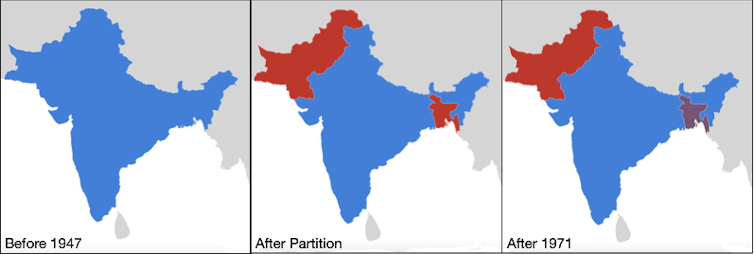Yesterday’s Supreme Court session at which the justices heard arguments in the case of Dobbs v. Jackson Women’s Health Organization was just the latest salvo in the culture wars which continue to demarcate two very distinct camps or tribes within the American populace. Perhaps it is no coincidence that, on the same day, Harvard University released the 42nd edition of its Youth Poll, a survey of 18 to 19 year-olds conducted by the Kennedy School of Public Policy. As Carl Jung might say, “Synchronicity runs deep.”
Buried beneath the headline about Joe Biden’s flagging approval rating among young Americans were the following:
- 35 percent of respondents believe there will be a second civil war in their lifetimes.
- 25 percent believe at least one state will secede from the union.
This raises the legitimate concern whether the United States which emerged from the first war between the states can survive in this cultural environment. One need look no farther than the editorial pages of the Washington Post or New York Times, cable news, talk radio or Facebook to know it would be a waste of time and space to add my two cents to the discussion.
What no one else is talking about is whether the union could survive a physical partition, as suggested by the Harvard survey. Forget the confederacy. Consider the following map created by the Guttmacher Institute based on current state efforts to restrict or protect a woman’s right to choose.

Does this remind you of anything, especially after Montana, Iowa, Kansas, Florida, South Carolina and Texas join the list of pro-life states? Maybe the 1947 partition of Pakistan following Indian independence from Great Britain. How did that work out? The physical divide became problematic resulting in the creation of an independent Bangladesh 24 years later as illustrated below.

How about the two-state solution to the Israeli-Palestinian conflict? Again, the physical separation has hampered attempts to find a single broker who can negotiate a peace covering both the West Bank and the Gaza Strip. When it comes to love, perhaps distance does make the heart grow fonder. Not so in governance or politics.

Returning to the Guttmacher Institute map, there is a resemblance to one only a political scientist familiar with the history of voting behavior in the U.S. could appreciate. Following passage of the Civil Rights Act in 1964, Democratic strategists recognized they could no longer rely on support in Southern states. To accumulate the required 270 electoral votes needed to win presidential elections they came up with the “Quad-Cali” strategy. It required piecing together a center-left coalition consisting of a quadrangle of Northeast and Midwest states plus California.
With the vantage point of hindsight from previous partitions, Quad-Cali seems not the best descriptor of this geographic configuration. Maybe we should take a cue from Pakistan. Try East America and West America on for size. Or better, the East Banks (with the capital located on Wall Street) and the Java Strip (Capital? Seattle, of course.)
The only remaining question? When Middle America realizes that residents of the states outside their jurisdiction will no longer subsidize their lifestyle through redistribution of federal taxes, will Middle America president Ron DeSantis authorize the construction of cross border settlements a la Benjamin Netanyahu?
For what it’s worth.
Dr. ESP
A once proud nation fragmented almost beyond help. Beware of a called Constitutional Convention. It all scares the hell out of me.